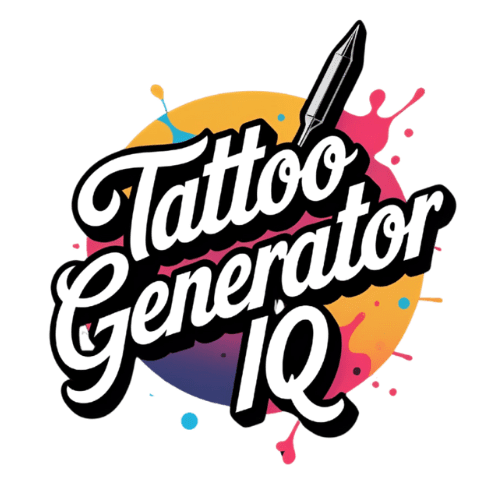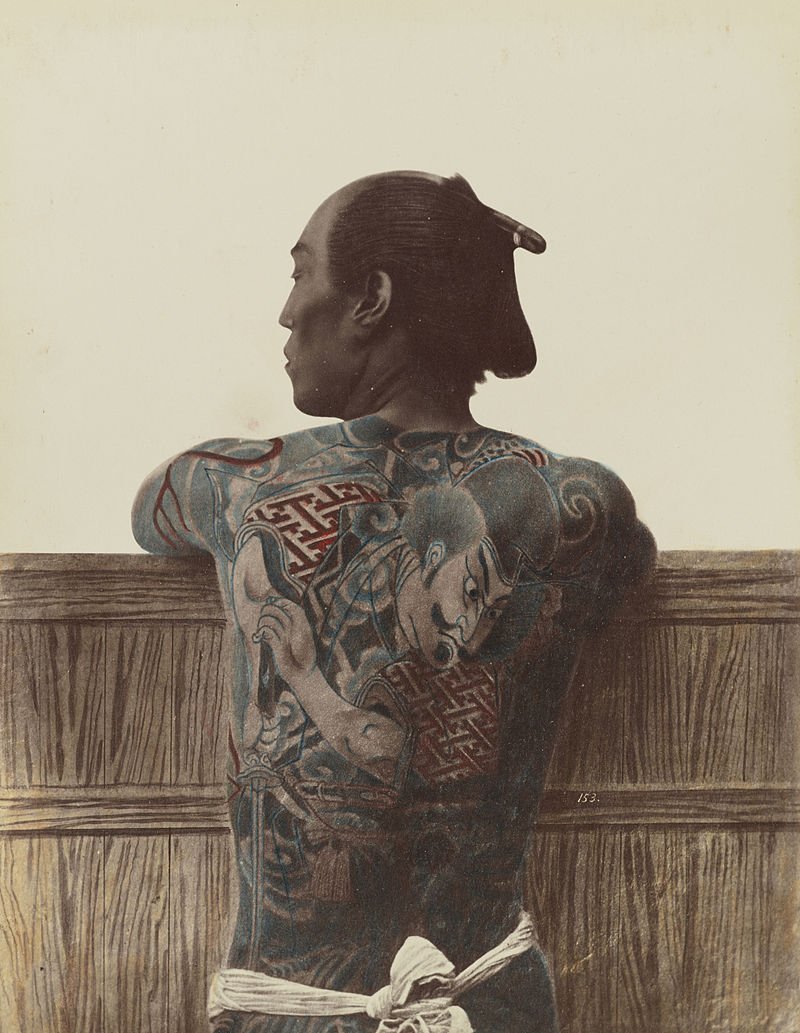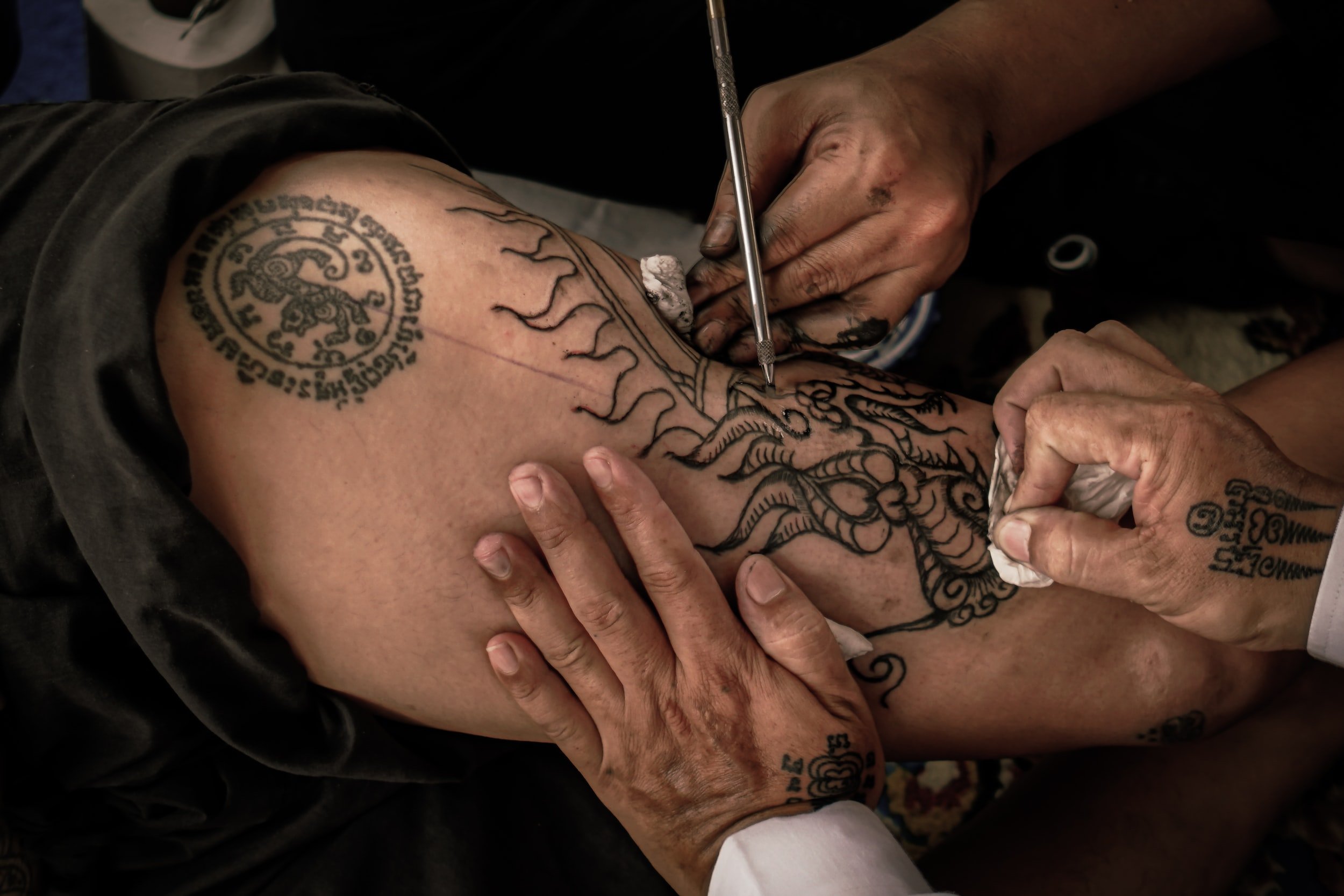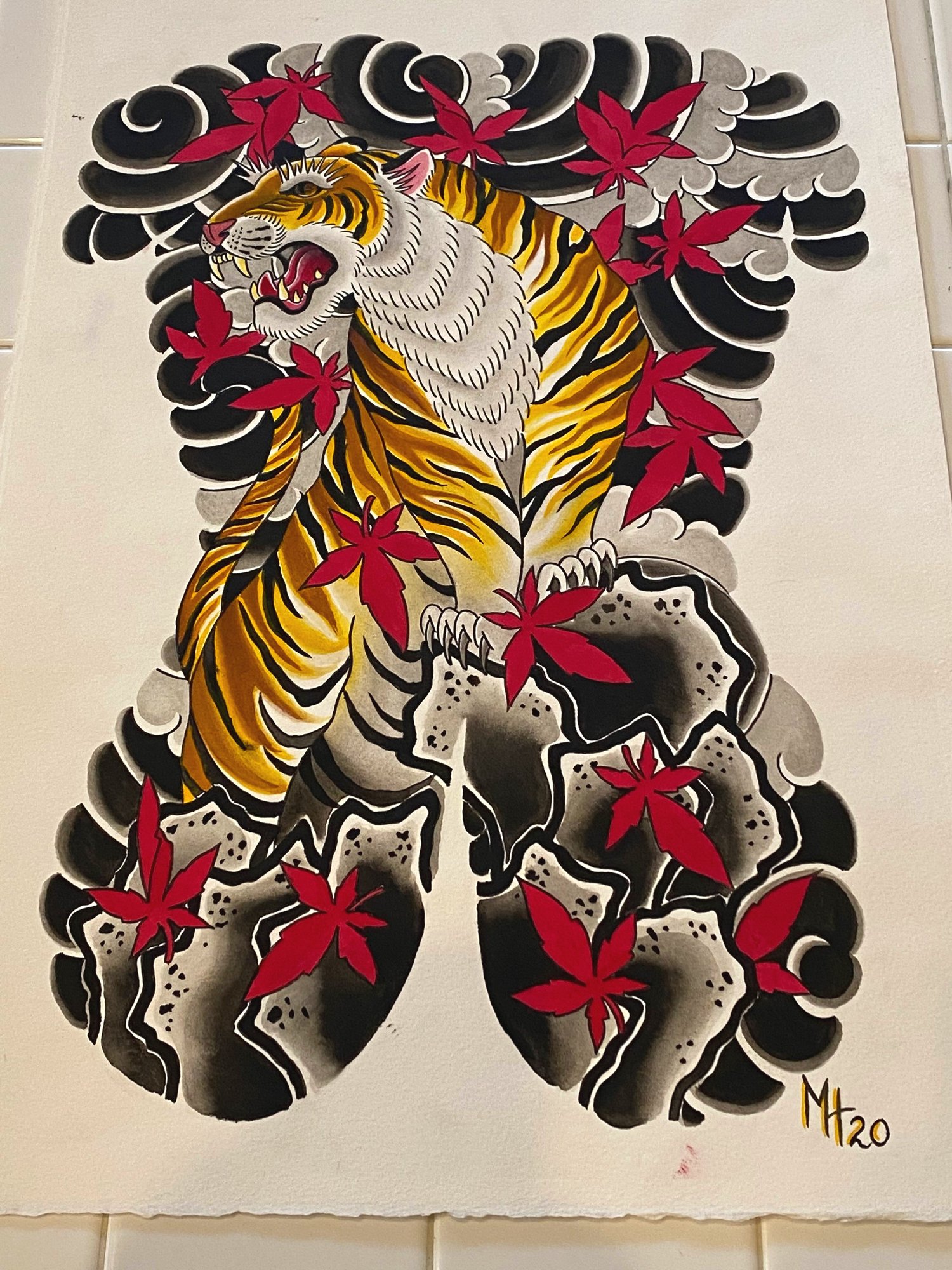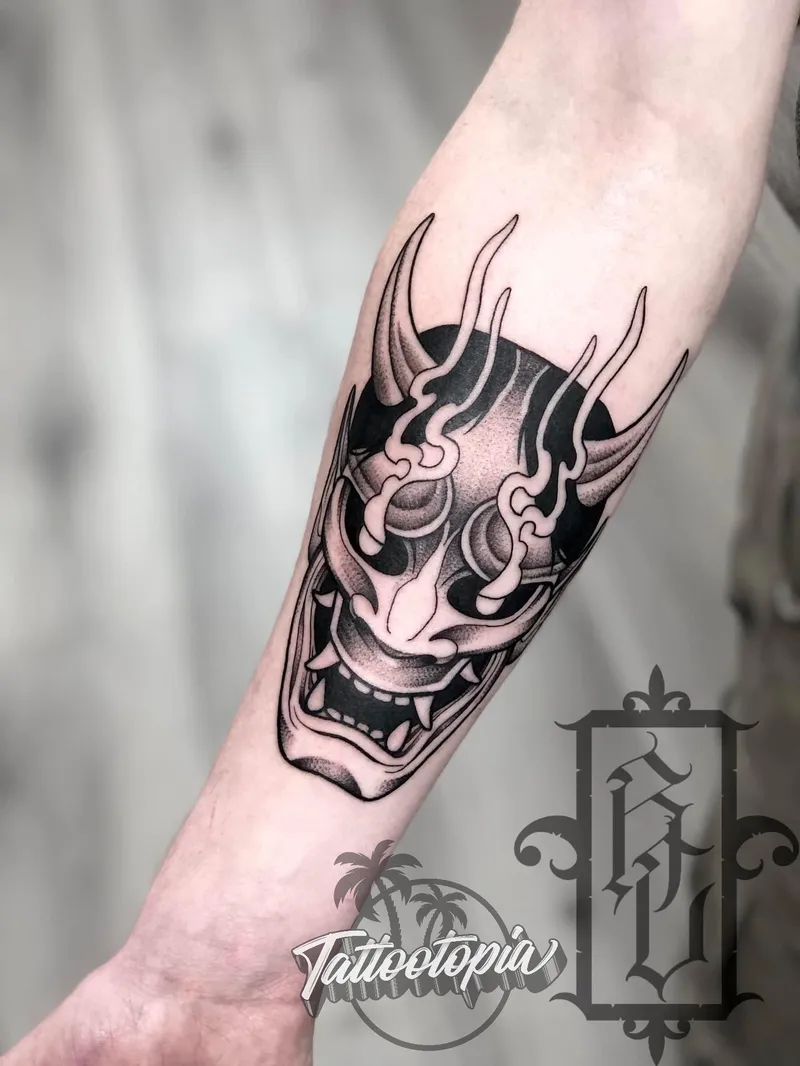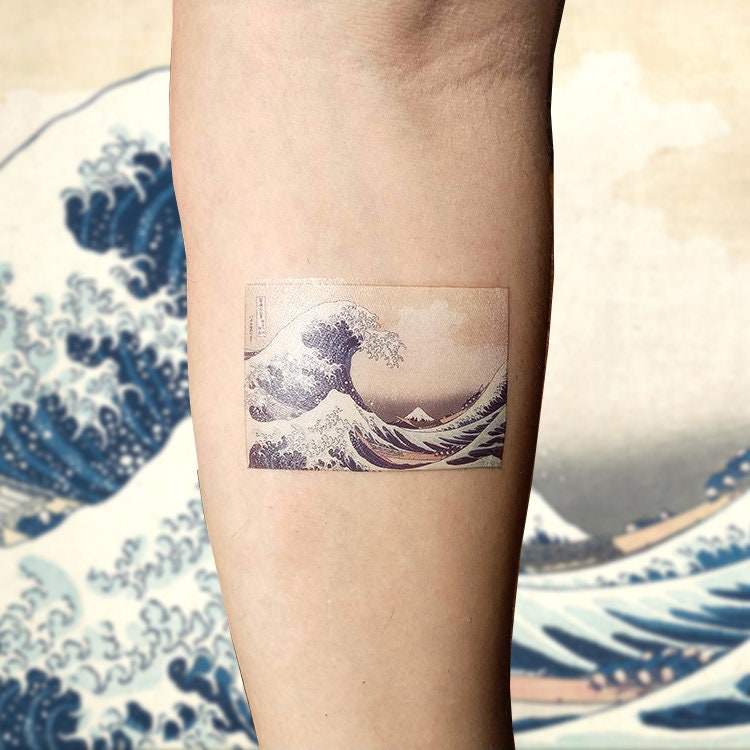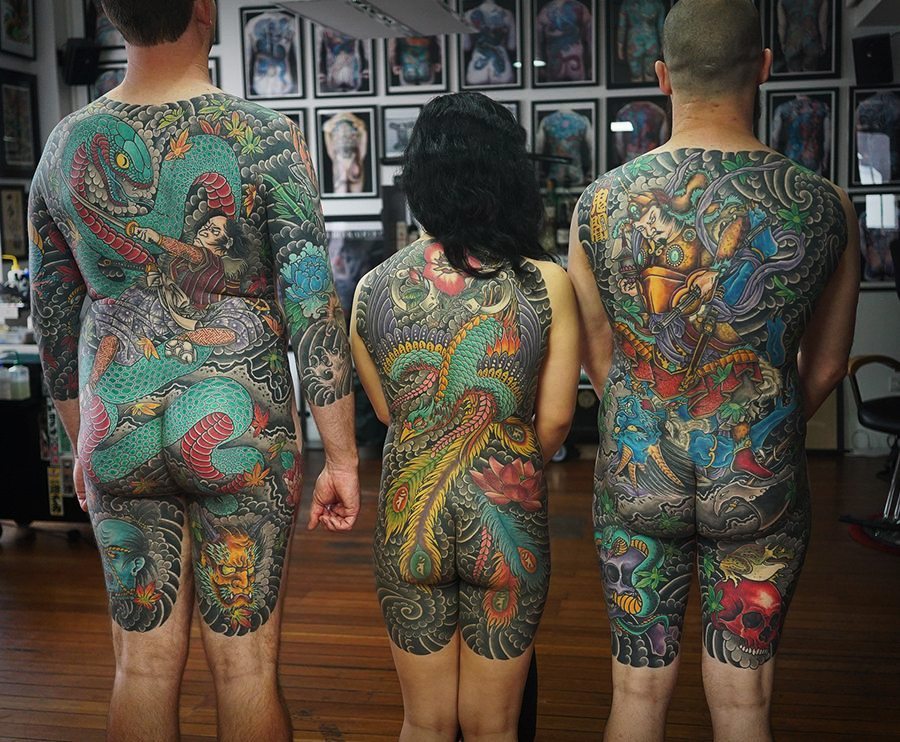25 Traditional Japanese Tattoo Designs That Will Transform Your Body Into Living Art
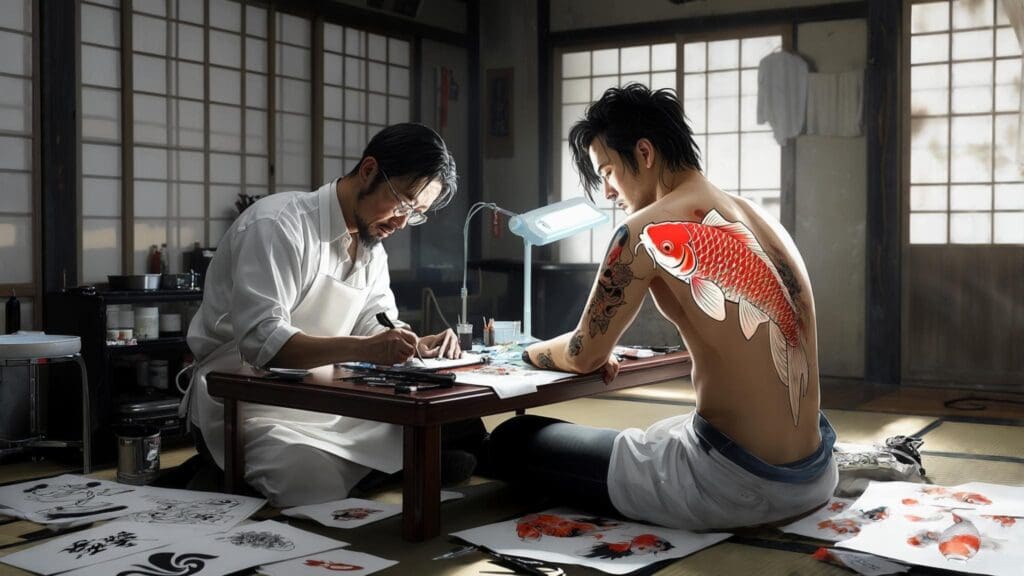
Traditional Japanese tattooing commands respect from 73% of tattoo artists worldwide who consider irezumi the gold standard for technical mastery and cultural depth, according to Carl Hallowell’s comprehensive analysis of global tattoo traditions. I remember walking into my first tattoo consultation completely unprepared for the cultural weight these designs carry – what I thought would be a simple dragon turned into a six-month research journey that completely changed how I view body art.
Source: squarespace-cdn.com
You’re about to discover 25 traditional Japanese tattoo designs that represent centuries of artistic evolution, spiritual meaning, and technical mastery. Each design carries specific symbolism that connects to Japanese folklore, nature worship, and philosophical traditions. Understanding these meanings isn’t just respectful – it’s essential for choosing artwork that will resonate with your personal journey for decades to come.
Table of Contents
- Essential Considerations Before Getting Traditional Japanese Tattoos
- Legendary Creatures and Dragons (8 Designs)
- Nature and Floral Elements (7 Designs)
- Mythological and Spiritual Figures (5 Designs)
- Water Elements and Landscapes (5 Designs)
- Design Specifications and Planning Examples
- How Each Design Measures Against Key Considerations
- Using Modern Technology to Plan Your Traditional Tattoo
TL;DR
- Traditional Japanese tattoos require extensive cultural research and respect for centuries-old symbolism
- Dragons, koi fish, and cherry blossoms offer the most universally positive meanings for first-time collectors
- Authentic irezumi demands large-scale compositions that flow with your body’s natural contours
- Master-level artists specializing in Japanese traditional work are essential for proper execution
- Most designs work best as part of larger body suits rather than standalone pieces
- Color choices carry specific cultural meanings that affect the overall symbolism
- Planning tools like AI generators can help visualize concepts before committing to this significant investment
Essential Considerations Before Getting Traditional Japanese Tattoos
Before committing to traditional Japanese tattoos, you need to understand six critical factors that determine long-term satisfaction. Cultural respect requires researching the deep meanings behind each symbol to honor rather than appropriate Japanese traditions. I’ve seen too many people rush into getting a Japanese tattoo without understanding what their chosen design actually represents.
Artistic authenticity demands finding artists who understand proper compositional rules, color palettes, and traditional techniques. The bokashi shading method creates the signature depth and movement in traditional irezumi, but most general tattoo artists haven’t mastered this specialized technique. Cultural research involves understanding the historical context, folklore, and spiritual significance behind each design element to ensure respectful representation rather than superficial appropriation.
Size and placement considerations are crucial since these designs typically require large canvases that flow with your body’s natural contours. Personal symbolism ensures the elements you choose align with your values and life experiences. Artist selection focuses on finding specialists who master traditional Japanese techniques rather than general tattoo artists.
Authentic execution requires artists trained in specific Japanese tattoo techniques including proper wind bar patterns, water flow representations, and the distinctive bokashi shading method that creates the signature depth and movement in traditional irezumi. Understanding the complete cost considerations helps in planning your traditional Japanese tattoo investment properly.
Long-term commitment planning prepares you for the financial and time investment of potentially expanding your tattoo over years as part of larger body suit compositions.
| Consideration Factor | High Priority Designs | Medium Priority Designs | Lower Barrier Designs |
|---|---|---|---|
| Cultural Respect Required | Buddha, Geisha, Samurai | Oni, Hannya, Tengu | Dragons, Koi, Cherry Blossoms |
| Master Artist Essential | Hannya Mask, Geisha Portrait | Phoenix, Tiger, Daruma | Bamboo, Maple Leaves, Simple Waves |
| Large Canvas Required | Full Dragons, Samurai Scenes | Phoenix Wings, Tiger Compositions | Small Koi, Individual Flowers |
| Research Depth Needed | Religious/Spiritual Figures | Mythological Creatures | Nature Elements |
| Cultural Sensitivity Level | Extensive Consultation | Moderate Understanding | Basic Respect |
Source: wixstatic.com
Cultural Research Example: When considering a dragon tattoo, research revealed that Japanese Ryu are water deities associated with wisdom and protection, unlike Western dragons that represent destruction. This knowledge helped the client choose ascending dragon positioning (representing growth and achievement) rather than descending positioning (which can symbolize decline), ensuring the tattoo aligned with their personal goals of career advancement and spiritual growth.
Source: squarespace-cdn.com
Legendary Creatures and Dragons
Source: instagram.com
1. Traditional Dragon (Ryu)
Japanese dragons represent the most iconic and culturally significant design in traditional tattooing, symbolizing wisdom, strength, and protection. Unlike Western dragons, Japanese Ryu are benevolent water deities associated with weather control and divine protection. These designs require master-level artistry to capture proper proportions, scale details, and the flowing movement that makes dragons appear alive on skin.
Dragons work exceptionally well for first-time large pieces because they carry universally positive symbolism and age gracefully with proper care. The design typically covers large areas like full backs, sleeves, or leg pieces, making them substantial investments that serve as centerpieces for larger compositions.
Proper dragon anatomy follows specific traditional rules including serpentine body positioning, distinctive claw formations, and facial features that convey benevolence rather than aggression. Scale work and shading techniques require understanding of how light plays across the dragon’s body to create the three-dimensional movement that distinguishes authentic Japanese tattoo dragons from simplified Western interpretations.
2. Phoenix (Ho-oh)
The Japanese phoenix symbolizes rebirth, renewal, and triumph over adversity, making it particularly meaningful for people who have overcome significant life challenges. Ho-oh designs require vibrant colors including reds, oranges, and golds that may need periodic touch-ups to maintain their visual impact.
These medium to large-scale pieces work excellently for covering scars or representing personal transformation journeys. Phoenix tattoos pair beautifully with complementary elements like peonies or cherry blossoms, creating cohesive compositions that tell complete stories of renewal and growth.
Source: pinimg.com
Feather texturing techniques require advanced skill in creating realistic plumage that flows naturally with body movement while maintaining the mythical qualities that distinguish phoenix from ordinary birds. Color saturation and flame effect integration demand expertise in blending techniques that create the illusion of the phoenix rising from or surrounded by divine fire.
3. Koi Fish
Koi fish represent perseverance, determination, and the ability to overcome obstacles, making them among the most popular and meaningful traditional Japanese tattoo designs. The direction of the koi carries specific symbolism – swimming upstream represents ongoing struggles and determination, while downstream swimming indicates achieved goals and success.
These versatile designs adapt well to various sizes from small accent pieces to large centerpieces, and they work beautifully as standalone tattoos or integrated into larger water-themed compositions with waves and lotus flowers. For deeper understanding of koi symbolism, explore our comprehensive guide on koi fish tattoo meanings and their cultural significance.
Directional symbolism requires understanding the cultural significance of upstream versus downstream positioning to ensure the tattoo accurately represents your personal journey and intentions. Scale patterns and fin details demand precision in creating the distinctive markings that differentiate koi varieties while maintaining the flowing movement that brings the fish to life on skin.
4. Tiger (Tora)
Tigers in Japanese tattooing symbolize courage, strength, and protection against bad luck and disease, serving as powerful protective talismans. These bold, masculine designs require expert shading techniques to capture the tiger’s fierce expression and muscular definition. Tigers typically work best at medium to large sizes to properly showcase the intricate facial features and traditional poses that convey strength and protection.
The striking visual impact makes tigers excellent choices for people seeking protective symbolism, though the bold nature may limit placement options for professional considerations. Understanding tiger tattoo meanings reveals the deep psychology behind these protective designs in Japanese culture.
Source: squarespace.com
Facial expression techniques focus on capturing the balance between fierce protection and controlled power that distinguishes Japanese tigers from purely aggressive Western interpretations. Traditional pose variations include crouching, leaping, and standing positions that each carry specific meanings related to different types of strength and protection.
5. Oni (Demon)
Despite their fearsome appearance, oni in Japanese culture can represent protection against evil spirits or the duality of human nature rather than pure malevolence. These complex designs require extensive cultural research to understand their protective versus destructive symbolism.
Oni tattoos create dramatic visual impact but require master-level artistry to properly execute the distinctive facial features, horn formations, and expressions that convey the intended meaning. The “demon” association may face social stigma from those unfamiliar with Japanese cultural context, making education about the protective symbolism important.
Source: tattootopia.org
Facial feature proportions follow specific traditional guidelines for horn placement, eye positioning, and mouth formation that distinguish protective oni from malevolent demons. Color symbolism in oni designs affects their meaning, with red oni typically representing protection while blue oni may indicate different spiritual qualities.
6. Tengu (Mythical Bird-Man)
Tengu are forest-dwelling creatures known for martial arts mastery and spiritual power, representing discipline, protection, and the connection between human and divine realms. These less common designs offer uniqueness while maintaining deep cultural significance rooted in Japanese folklore and martial traditions.
Tengu tattoos require artists familiar with traditional depictions including the distinctive bird-like features, human characteristics, and spiritual symbols. Medium-sized pieces typically work best to capture the intricate details, and these designs particularly appeal to martial arts enthusiasts and those drawn to spiritual warrior symbolism.
Traditional depiction elements include the characteristic long nose or beak, feathered details, and human-like body proportions that blend avian and human characteristics. Spiritual symbolism integration requires understanding tengu’s role as both protectors and teachers in Japanese folklore to properly convey their disciplinary and protective qualities.
7. Foo Dog/Lion (Komainu)
Guardian lions or foo dogs serve as protective spirits that ward off evil, often depicted in pairs representing the balance between strength and wisdom. These designs work excellently as single pieces or paired compositions, carrying strong protective symbolism that appeals to people seeking spiritual guardianship.
Komainu require understanding of traditional poses including sitting, standing, and protective stances that each convey different aspects of guardianship. Medium to large sizes work best to capture the detailed mane work and facial expressions that give these guardians their protective power.
Traditional pose variations include open-mouth and closed-mouth positions that represent different aspects of protection – speaking and listening, or breathing in and out of life force. Mane and facial detail work requires expertise in creating the flowing hair textures and fierce yet benevolent expressions that distinguish guardian lions from purely decorative designs.
8. Hannya Mask
Hannya masks represent the transformation of a woman into a demon through jealousy and obsession, symbolizing complex human emotions and the potential for both destruction and transformation. These designs carry deep psychological symbolism about emotional complexity, making them powerful representations of overcoming inner demons or acknowledging the duality of human nature.
Hannya tattoos require master-level artistry to properly capture the subtle expressions that convey the tragic story behind the transformation. The dramatic visual impact may be misunderstood without proper cultural context, making education about the symbolism important.
Source: fbsbx.com
Expression subtlety techniques focus on capturing the tragic humanity within the demonic transformation rather than pure horror, requiring advanced portraiture skills. Traditional color applications use specific palettes that enhance the emotional story, with different color combinations conveying various stages of the transformation from woman to demon.
Nature and Floral Elements
Source: cloudfront.net
9. Cherry Blossoms (Sakura)
Cherry blossoms embody the transient nature of life and beauty, encouraging appreciation for fleeting moments and life’s ephemeral qualities. Sakura designs offer universal beauty with deep cultural respect, working across various sizes and placements from delicate wrist pieces to elaborate branch compositions.
The delicate pink and white colors may require periodic touch-ups to maintain vibrancy, but the profound symbolism about embracing life’s temporary beauty resonates with most people. These versatile designs function beautifully as accent elements in larger pieces or as complete standalone compositions celebrating natural beauty and life’s precious moments.
Petal formation techniques require understanding how cherry blossoms naturally cluster and fall to create realistic branch compositions that capture the essence of spring renewal. Color gradation mastery involves blending subtle pink tones with white highlights to achieve the delicate translucent quality that makes sakura petals appear to glow on skin.
10. Peony (Botan)
Known as the “King of Flowers,” peonies represent honor, wealth, and traditionally masculine qualities in Japanese culture, though their beauty appeals across all genders. These vibrant designs demand skilled color work to capture the full, layered petals that create the peony’s distinctive appearance.
Medium to large sizes showcase the intricate petal details best, while the rich symbolism around prosperity and honor makes them meaningful choices for people valuing success and dignity. Peonies age gracefully with proper care and their bold presence makes them excellent centerpieces or complementary elements in larger compositions.
Source: squarespace-cdn.com
Petal layering techniques create the dimensional fullness that distinguishes peonies from flatter flower designs, requiring understanding of how light and shadow play across multiple petal layers. Traditional color combinations follow specific palettes that enhance the masculine symbolism while maintaining the natural beauty that makes peonies universally appealing.
11. Chrysanthemum (Kiku)
The imperial flower represents longevity, rejuvenation, and nobility, closely associated with autumn seasons and imperial symbolism in Japanese culture. Chrysanthemum designs offer elegant sophistication with highly respectful cultural significance, making them excellent choices for people seeking refined symbolism.
These flowers work well across various sizes and feature rich autumn color palettes that create striking visual appeal. The association with imperial power and longevity makes chrysanthemums less common than sakura, offering uniqueness while maintaining deep cultural roots and positive life symbolism. For those drawn to imperial flower symbolism, our chrysanthemum tattoo designs guide explores the deeper cultural meanings behind this noble flower.
Imperial design elements require understanding the specific chrysanthemum varieties associated with Japanese royalty and their distinctive petal formations. Autumn color mastery involves working with deeper oranges, reds, and golds that capture the seasonal associations while maintaining the flower’s noble characteristics.
12. Lotus Flower (Hasu)
Lotus flowers symbolize purity, enlightenment, and spiritual growth, representing the journey from muddy beginnings to beautiful enlightenment above the surface. These designs feature beautiful gradient colors from dark roots to bright blooms, creating visual metaphors for personal transformation and spiritual development.
Lotus tattoos work across multiple sizes and particularly appeal to people on spiritual journeys or those who have overcome difficult circumstances. The botanical accuracy required makes finding skilled artists important for capturing the distinctive lotus form and its symbolic journey from darkness to light.
Source: pinimg.com
Gradient symbolism techniques create the visual journey from dark muddy roots through water to the bright bloom that represents the spiritual transformation central to lotus meaning. Botanical accuracy requirements focus on capturing the distinctive lotus leaf shapes, seed pod formations, and petal structures that differentiate lotus from other water flowers.
13. Bamboo (Take)
Bamboo represents flexibility, resilience, and the ability to bend without breaking, symbolizing adaptability and inner strength through life’s challenges. These designs offer minimalist aesthetics within the traditional Japanese style, making them excellent choices for people preferring subtler artwork.
Bamboo works beautifully as background elements in larger compositions or as standalone pieces celebrating resilience and adaptability. The versatile placement options and representation of admirable life qualities make bamboo appealing to people who value strength through flexibility rather than rigid resistance.
Segmented structure techniques capture the distinctive bamboo joints and hollow sections that create the plant’s flexible strength. Minimalist integration methods show how bamboo elements can provide structural balance in larger compositions without overwhelming primary design elements.
14. Maple Leaves (Momiji)
Maple leaves symbolize autumn, change, and the passage of time, representing transformation and acceptance of life’s natural cycles. These designs feature beautiful color transitions from green to red that require skilled gradation techniques to capture the seasonal transformation.
Maple leaves work particularly well with water elements, creating compositions that celebrate natural change and seasonal beauty. The medium size preference allows for proper color detail while the symbolism around accepting life’s changes appeals to people navigating transitions or celebrating personal growth through different life seasons.
Seasonal color transition techniques create the natural progression from summer green through autumn reds that captures the temporal symbolism central to maple leaf meaning. Water element integration shows how maple leaves naturally combine with streams and ponds to create complete seasonal landscape compositions.
15. Pine Tree (Matsu)
Pine trees symbolize longevity, steadfastness, and virtue, representing endurance and unchanging principles throughout life’s seasons. These designs carry strong, traditionally masculine symbolism while working effectively as background elements or main focal points in larger compositions.
Pine trees represent stability and long life, appealing to people who value tradition, consistency, and enduring principles. The typically larger canvas requirements make them substantial design commitments, but the symbolism around permanence and virtue creates meaningful artwork for people seeking to represent their core values.
Needle texture techniques create the distinctive pine foliage that differentiates these evergreens from other tree varieties in traditional Japanese art. Symbolic positioning methods show how pine trees can anchor larger compositions while representing the unchanging principles that provide stability through life’s changes.
Mythological and Spiritual Figures
Source: pinimg.com
16. Buddha
Buddha representations carry profound religious and philosophical significance, symbolizing enlightenment, peace, and spiritual awakening. These designs require deep respect and understanding of Buddhist principles, with some considering them inappropriate for non-practitioners.
Buddha tattoos demand master-level artistry to capture the serene expressions and spiritual presence that honor the religious significance. Medium to large sizes allow for proper detail work in facial features and traditional poses. The spiritual meaning makes these powerful choices for people on meditation or enlightenment journeys, though cultural sensitivity remains paramount.
Spiritual expression techniques focus on capturing the serene enlightenment and compassionate wisdom that distinguishes Buddha representations from ordinary portraiture. Religious sensitivity considerations require understanding Buddhist principles and consulting with practitioners to ensure respectful representation rather than superficial appropriation.
17. Geisha
Geisha symbolize beauty, grace, and the appreciation of art and culture, representing the refinement of Japanese aesthetics and artistic mastery. These designs require cultural sensitivity and proper research to avoid appropriation while celebrating feminine beauty and artistic dedication.
Geisha tattoos demand skilled portraiture artists capable of capturing delicate facial features, traditional makeup, and elegant poses. Medium to large sizes work best for proper facial proportion and detail work. The celebration of artistic refinement appeals to people who value cultural arts, though potential cultural appropriation concerns require careful consideration and respectful approach.
Source: tattoos.gallery
Traditional makeup accuracy requires understanding the specific white base, red lip colors, and eye designs that create authentic geisha appearance. Cultural sensitivity balance involves celebrating the artistry and dedication of geisha while avoiding stereotypes or superficial representation of Japanese culture.
18. Samurai Warrior
Samurai represent honor, loyalty, courage, and the warrior spirit, embodying the code of Bushido and traditional Japanese martial values. These designs carry strong masculine symbolism with clear positive attributes around discipline and honor.
Samurai tattoos require historical accuracy in armor details, weapon representations, and traditional poses that convey warrior dignity. The typically large-scale designs appeal to people valuing honor and discipline, though the complex shading and detail work demands experienced artists familiar with historical Japanese military equipment and traditional warrior poses.
Source: pinimg.com
Historical accuracy requirements include proper armor construction details, weapon authenticity, and traditional poses that reflect actual samurai bearing and dignity. Bushido symbolism integration ensures the design captures the philosophical principles of honor, loyalty, and courage rather than just martial imagery.
19. Daruma Doll
Daruma dolls represent perseverance, good luck, and goal achievement, traditionally used for making wishes and setting intentions in Japanese culture. These designs carry positive symbolism around goal achievement and determination, making them culturally appropriate and respectful choices.
Daruma tattoos work well in smaller sizes while maintaining their symbolic impact, offering unique and less common designs that still honor Japanese traditions. The appeal to goal-oriented individuals makes them meaningful for people focused on personal achievement and perseverance through challenges.
Traditional doll characteristics include the distinctive round shape, facial features, and symbolic elements that make Daruma recognizable and culturally accurate. Goal-setting symbolism integration captures the traditional use of Daruma dolls in Japanese culture for making wishes and tracking personal achievements.
20. Fujin and Raijin (Wind and Thunder Gods)
The gods of wind and thunder represent the power of natural forces and divine protection, often depicted together in dynamic compositions showing elemental power. These designs create dramatic, powerful imagery with strong cultural significance rooted in Shinto traditions and natural worship.
Fujin and Raijin typically require large canvases for proper impact, with complex mythology requiring research to understand their roles in Japanese spiritual traditions. The representation of natural power and divine protection appeals to people drawn to elemental forces and spiritual guardianship.
Elemental representation techniques capture the wind and thunder effects that surround these deities, requiring advanced skills in depicting motion and natural forces. Mythological accuracy ensures proper depiction of traditional attributes, poses, and symbolic elements that distinguish these specific deities from generic supernatural figures.
Water Elements and Landscapes
Source: etsystatic.com
21. Great Wave (Hokusai-inspired)
Inspired by the famous woodblock print, Great Wave designs represent the power of nature and life’s challenges and triumphs. These iconic, recognizable designs offer universal appeal while working across various sizes from small tributes to large statement pieces.
The symbolism around overcoming life’s challenges resonates broadly, while the design requires skilled linework and shading to capture the dynamic movement that makes waves appear alive. Great Wave tattoos serve as culturally respectful homages to famous Japanese art while representing personal strength through adversity.
Wave dynamics require understanding the specific curl formations and foam patterns that create the iconic Great Wave appearance and sense of movement. Artistic homage techniques ensure the tattoo honors Hokusai’s original work while adapting the design effectively for skin application and personal meaning.
22. Koi Swimming Upstream
Koi swimming against current specifically represents determination to overcome obstacles and achieve goals, carrying clear positive symbolism appreciated across cultures. These dynamic compositions feature strong visual flow that works excellently as sleeve or back pieces, representing personal growth and perseverance through challenges.
The directional symbolism requires understanding upstream versus downstream meanings to ensure accurate representation of ongoing struggles versus achieved success. The universal appeal of perseverance symbolism makes these meaningful choices for people facing challenges or celebrating personal determination. Learn more about the profound symbolism in our detailed black koi fish tattoo meaning guide that explores these powerful designs.
Directional flow techniques create the visual sense of movement against current that reinforces the symbolic meaning of overcoming obstacles. Water current representation requires skill in depicting the resistance and struggle that gives upstream swimming its powerful symbolic meaning.
23. Waterfall (Taki)
Waterfalls represent purification, renewal, and the flow of life, symbolizing cleansing and spiritual refreshment through natural forces. These designs offer peaceful, meditative symbolism that works excellently as background elements for other designs or as standalone pieces celebrating natural beauty.
Waterfalls work particularly well in vertical compositions that follow body contours naturally. The spiritual cleansing symbolism appeals to people seeking renewal or representing fresh starts, while the execution requires skilled water technique mastery to create realistic falling water effects.
Source: tiktok.com
Falling water techniques capture the cascading movement and mist effects that create realistic waterfall appearances on skin. Purification symbolism integration ensures the design conveys the spiritual cleansing aspects rather than just decorative water elements.
24. Ocean Waves with Foam
Traditional wave patterns represent life’s ups and downs, the constant flow of existence, and adaptability through changing circumstances. These versatile design elements work alone or integrated with other motifs, representing life’s natural rhythms and the ability to flow with change.
Ocean waves require mastery of traditional wave techniques that follow specific Japanese artistic conventions. The designs work across various sizes and placements, offering flexibility while maintaining deep symbolic meaning about accepting and adapting to life’s constant changes.
Traditional wave pattern techniques follow specific Japanese artistic conventions for foam formation, curl shapes, and flow patterns. Symbolic integration methods show how wave elements can enhance other designs while adding layers of meaning about life’s natural rhythms.
Source: istockphoto.com
25. Carp Banner (Koinobori)
Stylized carp flags traditionally flown for Children’s Day represent family, growth, and good fortune for children, carrying family-oriented symbolism perfect for parents. These colorful, celebratory designs offer less common options that provide uniqueness while maintaining cultural significance.
Koinobori work well in medium sizes and represent hope for future generations, making them meaningful for people focused on family legacy and children’s success. The festive nature creates uplifting artwork that celebrates family bonds and optimistic futures.
Banner stylization techniques capture the distinctive flag-like appearance while maintaining the carp symbolism central to Children’s Day celebrations. Family symbolism integration ensures the design conveys the generational hopes and family protection aspects of traditional koinobori displays.
Design Specifications and Planning Examples
Proper planning requires understanding how different complexity levels affect time, cost, and artistic requirements for traditional Japanese tattoos. Simple designs work well for testing your commitment to the style, requiring 2-4 hours and basic traditional elements. Medium complexity pieces need 4-6 sessions over several months with vibrant colors and detailed compositions.
Complex multi-element designs require 10-15 sessions over 8-12 months, demanding master-level artists and significant financial investment. Each complexity level serves different goals from introduction to the style through complete body suit foundations. For comprehensive cost planning, review our detailed breakdown of shoulder tattoo costs which often feature traditional Japanese tattoos.
| Complexity Level | Design Examples | Sessions Required | Time Investment | Cost Range | Artist Skill Level |
|---|---|---|---|---|---|
| Simple | Small koi, single cherry blossom branch | 1-2 sessions | 2-4 hours total | $300-800 | Intermediate+ |
| Medium | Phoenix shoulder, tiger composition | 3-6 sessions | 12-20 hours | $1,500-4,000 | Advanced |
| Complex | Full sleeve with multiple elements | 8-15 sessions | 40-80 hours | $5,000-15,000 | Master Level |
| Body Suit Foundation | Back piece with coordinated elements | 15-25 sessions | 80-150 hours | $15,000-40,000+ | Master Specialist |
Source: pinimg.com
Planning Example – Medium Complexity Phoenix: Sarah wanted a shoulder phoenix representing her recovery from illness. Planning involved: 1) Research phase (2 weeks studying Ho-oh symbolism), 2) Artist consultation (1 month finding a specialist), 3) Design development (3 weeks refining composition), 4) Execution (6 sessions over 4 months), 5) Healing and touch-ups (2 additional months). Total investment: 8 months timeline, $3,200 cost, resulting in a meaningful 8-inch piece that perfectly captured her transformation story.
Session planning considerations include healing time between appointments, color saturation requirements, and the progressive building of complex compositions over multiple visits. Complexity scaling helps determine appropriate starting points based on your experience level, budget constraints, and long-term vision for potential expansion into larger body suit compositions.
How Each Design Measures Against Key Considerations
Evaluating designs against cultural respect, artistic requirements, size needs, personal symbolism, artist selection, and long-term commitment helps match choices to individual circumstances and goals. High cultural respect designs require extensive research and sensitivity, while natural elements offer lower cultural barriers for newcomers.
Master-level artistry becomes essential for figurative designs, while floral elements allow more flexibility in artist selection. Large canvas requirements limit some designs to substantial commitments, while others adapt across size ranges. Understanding these trade-offs prevents mismatched expectations and ensures long-term satisfaction with your traditional Japanese tattoo investment.
| Design Category | Best For Beginners | Moderate Experience | Advanced Collectors |
|---|---|---|---|
| Dragons | Small ascending dragons | Medium back pieces | Full body suit centerpieces |
| Nature Elements | Cherry blossoms, bamboo | Lotus with water, maple scenes | Complete seasonal landscapes |
| Mythological Figures | Daruma dolls | Tengu, Foo dogs | Hannya masks, complex oni |
| Spiritual Figures | – | – | Buddha, Geisha (with extensive research) |
| Water Elements | Simple waves | Koi with currents | Great Wave compositions |
Source: shopify.com
Beginner Success Story: Mark chose a small upstream koi for his first traditional Japanese tattoo after evaluating his options. The design offered: positive universal symbolism (no cultural appropriation concerns), moderate size requirements (fit his budget), clear personal meaning (career perseverance), and flexibility in artist selection (many artists can execute quality koi). Six months later, he expanded it into a larger water scene, demonstrating how starting appropriately leads to successful long-term collecting.
Cultural sensitivity scaling helps identify which designs require extensive research and cultural education versus those offering safer entry points into Japanese tattoo traditions. Artistic skill matching ensures your chosen design aligns with available artists in your area and budget range, preventing compromised execution of culturally significant artwork.
Using Modern Technology to Plan Your Traditional Tattoo
AI tattoo generators bridge the gap between initial inspiration and final artwork by helping visualize concepts before committing to significant investments. The platform allows you to explore authentic traditional Japanese elements, experiment with compositions, and create detailed references for consultations with specialized artists.
You can generate multiple variations instantly to understand how different approaches work – whether considering koi fish direction, cherry blossom positioning, or dragon compositions. This technology helps you approach artists with clear, well-researched visions that honor traditional Japanese heritage while reflecting your personal story, though execution should always be done by artists specializing in this cultural art form. Explore our comprehensive AI tattoo generators guide to understand how technology can help plan your traditional Japanese tattoo design.
Source: envatousercontent.com
Visualization capabilities allow exploration of traditional element combinations and compositions before committing to permanent artwork, reducing the risk of design regrets. Reference generation creates professional consultation materials that help communicate your vision clearly to specialized traditional Japanese tattoo artists, improving collaboration and final results.
Final Thoughts
Traditional Japanese tattoos represent more than decorative body art – they’re cultural artifacts that connect you to centuries of artistic evolution, spiritual meaning, and technical mastery. Your choice to explore irezumi demonstrates respect for one of the world’s most sophisticated tattoo traditions, but that respect must extend through every aspect of your journey from research to execution.
The 25 designs we’ve explored offer pathways into this rich tradition, each carrying specific cultural weight and artistic requirements. Whether you’re drawn to the protective power of dragons, the perseverance symbolism of koi fish, or the spiritual depth of lotus flowers, your chosen design will become part of your personal story while honoring Japanese cultural heritage.
Source: authentink.com
Remember that authentic traditional Japanese tattoos require patience, research, and significant investment in both time and money. The artists capable of executing these designs properly have spent years mastering techniques that can’t be rushed or compromised. Your commitment to finding the right artist and understanding your chosen symbolism ensures your tattoo will honor both the tradition and your personal journey.
Long-term satisfaction depends on balancing personal meaning with cultural respect, ensuring your chosen design resonates with your values while honoring Japanese traditions. Investment planning should account for the full journey from initial consultation through potential expansion, as many traditional Japanese tattoos naturally evolve into larger body suit compositions over time.
